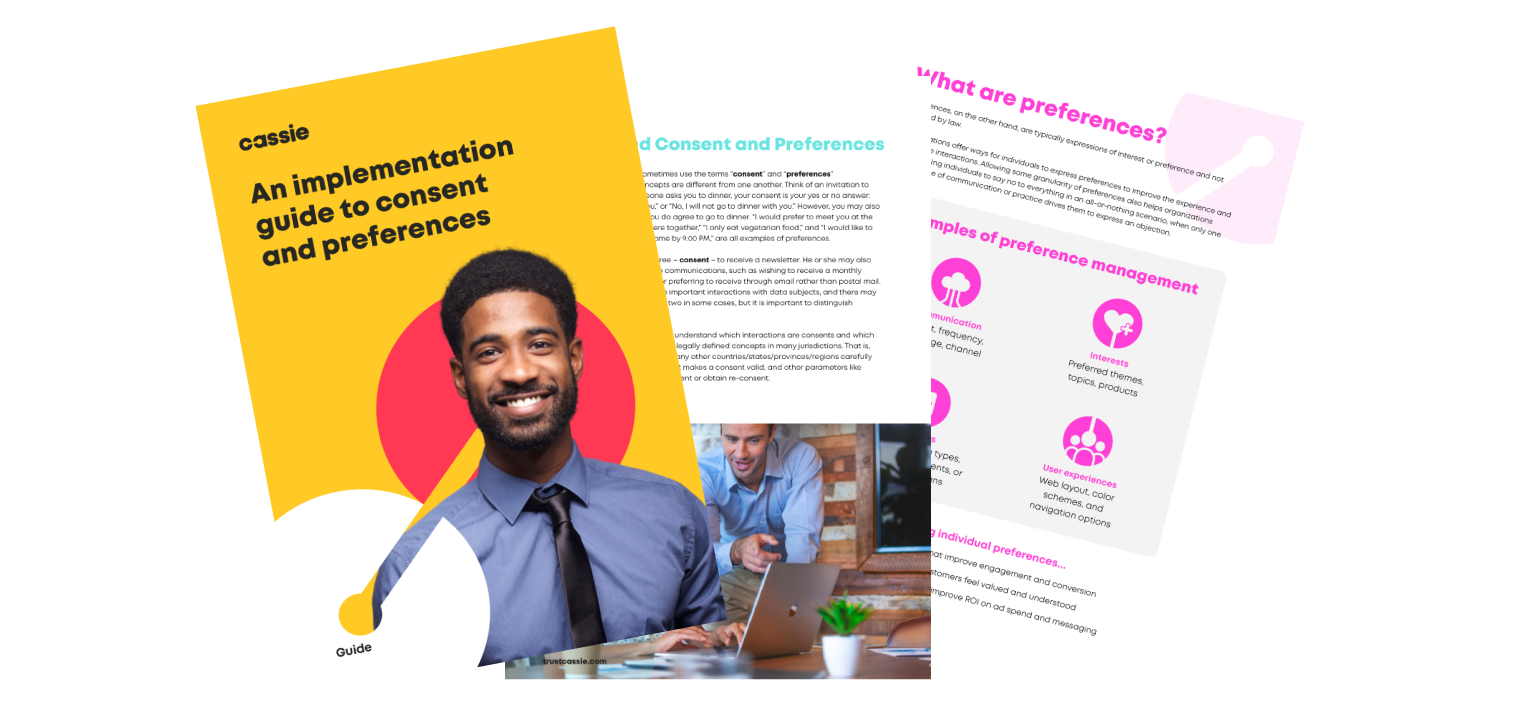From reactive to self-service consent: Advancing CPM maturity
Posted: September 20, 2024
It is no secret that consumer opinions change. There are generational differences in consumer preferences, certainly, but even across generations, preferences can shift over time. Technologies improve, media attention redirects focus, world events occur – there are thousands, if not millions, of reasons why people may change their minds about something.
For example, take the customer perspective about grocery delivery. Five or more years ago, grocery delivery was possible but not popular. Then COVID-19 hit, and people had to change their shopping habits. Some portion of the population began to rely on grocery delivery services and, even after in-store shopping began to be possible again, continued with those home-delivery services. In other words, outside events drove people to try something new, and with positive experiences at least some of those people changed their perception, habits, and expectations.
The same is true for consumer perception about full service versus self-service.
Though self-service grocery store checkout stations, airport check-in stations, and other self-service options have been available for some time, years ago it was common to see long full-service lines and completely empty self service lines. The perception was that “self-service meant less service.” People just preferred to deal with other people to fulfil their needs. Like in the grocery delivery example, COVID hit and suddenly, shoppers and travelers changed their preference from human-driven solutions to self-service to support their needs.
Evolving preferences and generational differences
In the online world, advances in technology and consumer interface design are the engines that have driven the transformation to self-service. For the first time, technology is now able to provide most or all the nuances in choices that a human agent was able to provide. Artificial intelligence (AI) can interpret common human language and return responses that make sense and match the request a high percentage of the time. Technology makes superior self-service easier (and better) than ever.
According to one Gartner study, 38% of Gen Z-ers would simply give up on solving an issue if they were unable to solve it through self-service. In other words, younger generations expect and prefer self-service and are reluctant – if not unwilling – to contact a human being for help.
An additional advantage for companies to consider related to self-service is considerable cost savings. Some studies estimate that live interactions cost 80-100 times more than a fully self-service solution. As technologies that make self-service increasingly sophisticated become more cost effective, the up front cost of investing in self-service can seem like a budgetary blip.
It is easy to see how consumer perception shifts towards a general favorability for self-service, aided by technological advances, the aging out of less supportive generations, and events like COVID. Customer perception of self-service specifically related to privacy – consents, preferences, and other interactions – show similar trends.
Data subjects are increasingly interested in their privacy and data rights, and they want to be able to see their consents and preferences, make changes, and understand terms clearly and in one place. Not only that, research suggests that different data subjects have different perspectives about how – or whether – an organization should handle their personal data. For example, one study shows a spread of sensitivity about privacy, including generational differences in requesting individual data rights. This means that there is quite a lot of variability in consumer privacy preferences, which can be challenging and expensive to handle through human-to-human interface.
The legislative and cost implications
Speaking of expense, the cost of privacy compliance can be significant – and with new regulations and requirements added regularly around the world, the cost of compliance will only increase if addressing requests requires 1-1 human interactions.
According to the US State of California’s own estimates for compliance with its California Consumer Privacy Act, companies were expected to spend millions of dollars for related legal, operational, technical, and business costs. Across the global landscape, multi-national companies face similar compliance costs to prepare for and comply with ever-changing regulations.
In the early days of privacy, many companies relied on human-to-human interactions for compliance, and for good reasons. Evolving privacy regulations created uncertainty about the stability of compliance requirements, volume of requests, consumer reactions, and enforcement. Consumer perceptions about self-service opportunities were lower on an upwards curve (pre-COVID). Also, self-service enabling technologies were at a lower level of maturity. All these reasons and more contributed to many organizations’ decision to invest in process and people rather than technology to solve for privacy rights, questions, and requests.
The future will be self-service?
Now, though, is the intersection of all the developments necessary to make a different decision about self-service in the privacy space. First, customers – especially younger generations – prefer self-service options to solve their problems. Second, technology has advanced to the point where it can remove previous obstacles, such as the ability to handle contextual information, common language, and complex conditions. Regulations continue to evolve, but now there exist clear trends on which future-proof decisions. Moreover, competitive pressures to reduce costs make investment in self-service solutions attractive from a practical perspective.
Self-service in privacy means a principal place in which a data subject can review current consents and preferences, make changes or consents and preferences, ask questions, and trigger individual rights that may apply. In other words, privacy self-serve almost by definition is a consent/preference and individual rights management platform. At least, it is the data subject interface component of that platform.
Whether home-grown or purchased, a good privacy consent/preference and individual rights management platform will provide a clear, easy-to-use data subject experience. It will have all the background integration needed to follow through on self-serve requests. The platform will also provide useful reporting and compliance-oriented tracking on that follow-through and be flexible enough to accommodate future needs as business practices and external laws change.
There is no doubt that creating superior customer experiences is hard to do and creating efficient and effective follow-through on data subject requests is even harder. However, the perfect storm of data subject expectations, technological advances, and a maturing privacy requirements landscape means that this may be the time to consider how to create that win-win result of self-service privacy.


